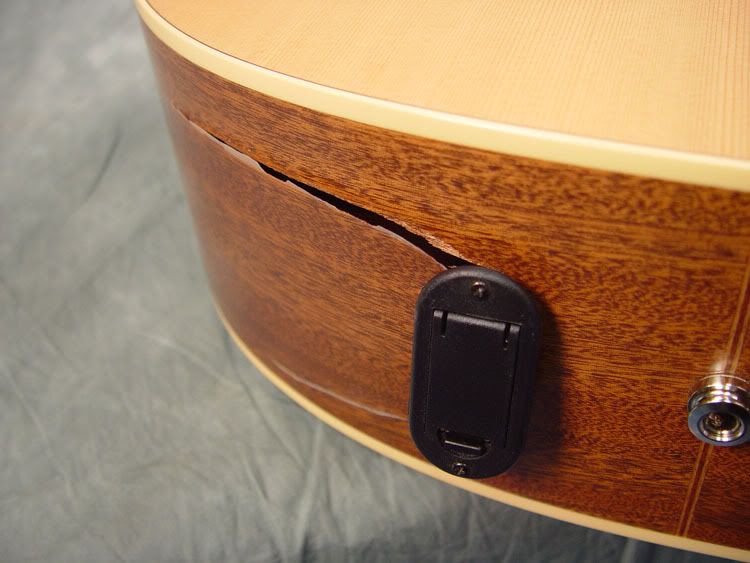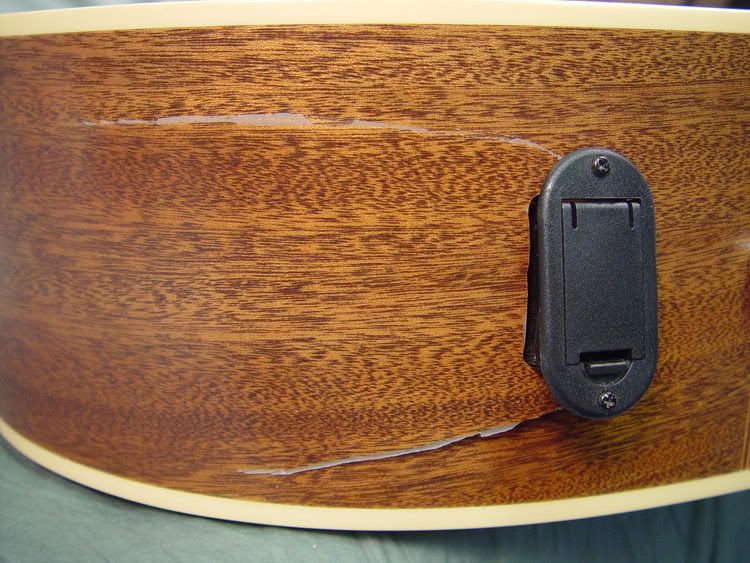Hi, I'm to the forum (been lurking for a while) and I really love the free exchange of ideas and techniques which I see here. Now to the point. I'm not a professional luthier but I do work on guitars quite a bit. A friend of mine recently brought me this Godin with some damage. I as wondering if any of you could suggest some possible ways to best fix this damage. I was thinking of making a custom caul to fix the damaged area's shape and try to glue is with a polyurathane adhesive.


Thanks in advance.
Denny

